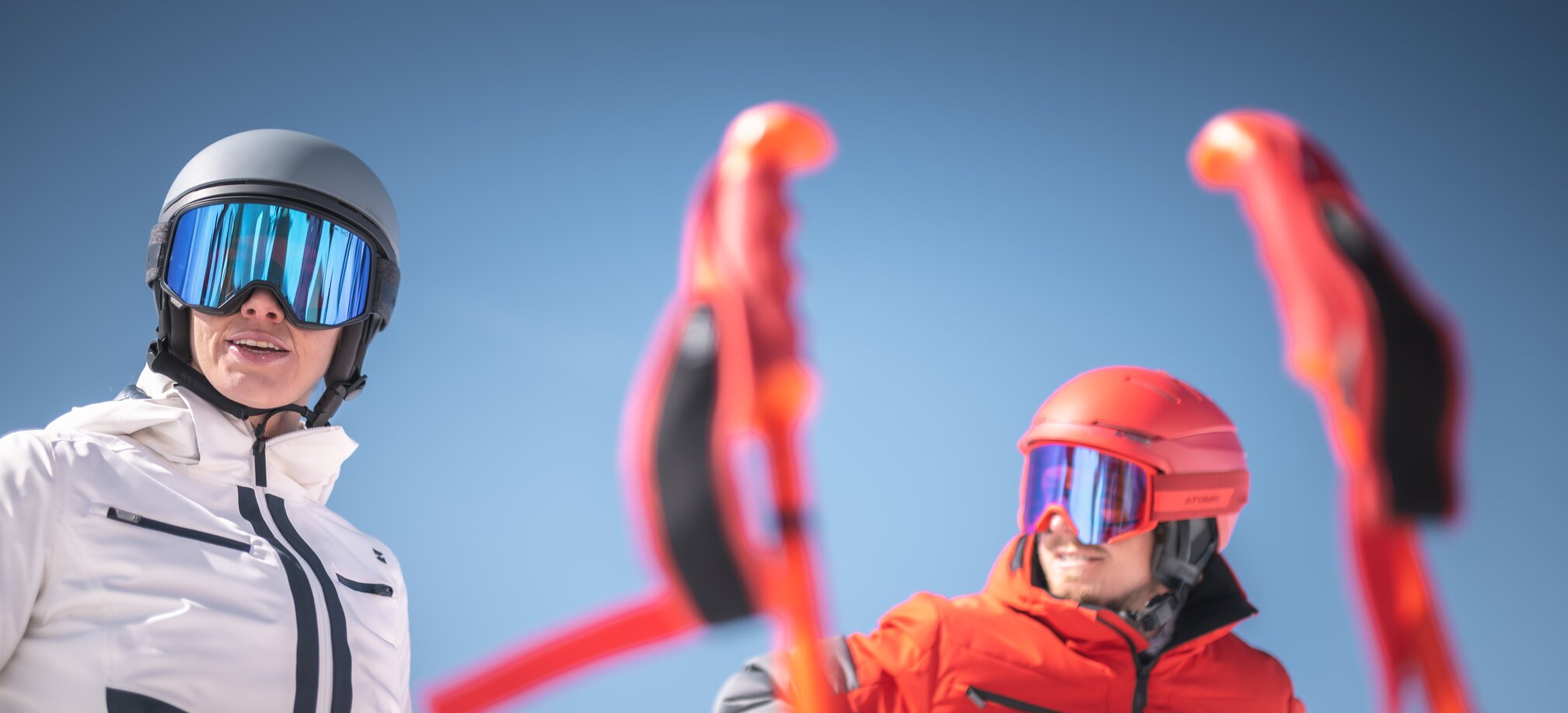First of all, it should be noted that ski goggles protect the eyes of every skier or snowboarder from the wind and possible precipitation and are therefore part of the standard equipment. Even if the ski goggles sometimes restrict your vision in bad weather conditions, they are still extremely important. Side Note: Sunglasses are not a suitable protection for our eyes when skiing. In any case, the ski goggles should be adapted to the weather conditions. In poor visibility conditions, it is therefore much more advisable to use special glasses that enhance contrasts and thus let in more light - which improves vision in no time.
Which color goes with which weather?
Ski goggles can be found in all colors and shapes. The straps, the frames and glasses are available in all possible colors: yellow, orange, blue, black,... – mirrored glasses are also very modern. The color of the lenses has a direct impact on vision. Heavily tinted and mirrored lenses reflect the sun's rays and are therefore particularly suitable in bright sunshine and a blue sky. In poor weather conditions, less tinted lenses such as yellow, orange or pink are the best.

What are the filter categories?
In addition to the color of the glasses, the so-called filter category is particularly important when it comes to the perfect view. Category 3 and 4 glasses are ideal in bright sunshine on the glacier and on sunny days, as they protect the eyes as best as possible from the strong rays of the sun thanks to their low light transmission. In snowfall and cloudy weather, category 1 and 2 lenses are the model of choice, in order to retain a clear view even in these conditions and, above all, to be able to clearly recognize contours. Category 0 lenses hardly protect the eye from the sun at all, but let the most light through and therefore enable the best vision when skiing at night or indoors. Here is a brief overview of the lens categories and when you best use them:
|
Category |
Light Transmission in % |
Weather Condition |
|
Category 0 |
81-100% |
Night / Indoor |
|
Category 1 |
44-80% |
Heavy clouds / snowfall |
|
Category 2 |
19-43% |
Partly cloudy |
|
Category 3 |
9-18% |
Sunshine |
|
Category 4 |
3-8% |
Strong sunshine / glacier |

Do I need separate ski goggles for every weather?
Not necessarily. Thank God there are already great developments here - most ski goggles have interchangeable lenses. This means that you can easily change the lenses of a single ski goggle using a mechanism that varies depending on the manufacturer (click, magnet, etc.). So you only have to buy the glasses and not the whole goggles to change. It is sufficient to have 2 glasses - one for sunny and one for cloudy days. For very active skiers or snowboarders it can also pay off to have 2 ski goggles. Another option is photochromic lenses - they are self-tinting and thus automatically adjust the intensity of the tint to the light conditions.
In order to enjoy your ski goggles for a long time, it is important to always keep them in the case when you are not using them - this protects them from scratches and other damaging environmental influences, especially with mirrored lenses. Due to the sensitive materials and the anti-fog coating on the inside, cleaning should be limited to clear water and a soft microfiber cloth.
I hope I was able to support you with these tips in choosing the right ski goggles and I wish you a lot of fun skiing with the perfect view on the slopes. 😉
Let me know - which glasses did you choose?


